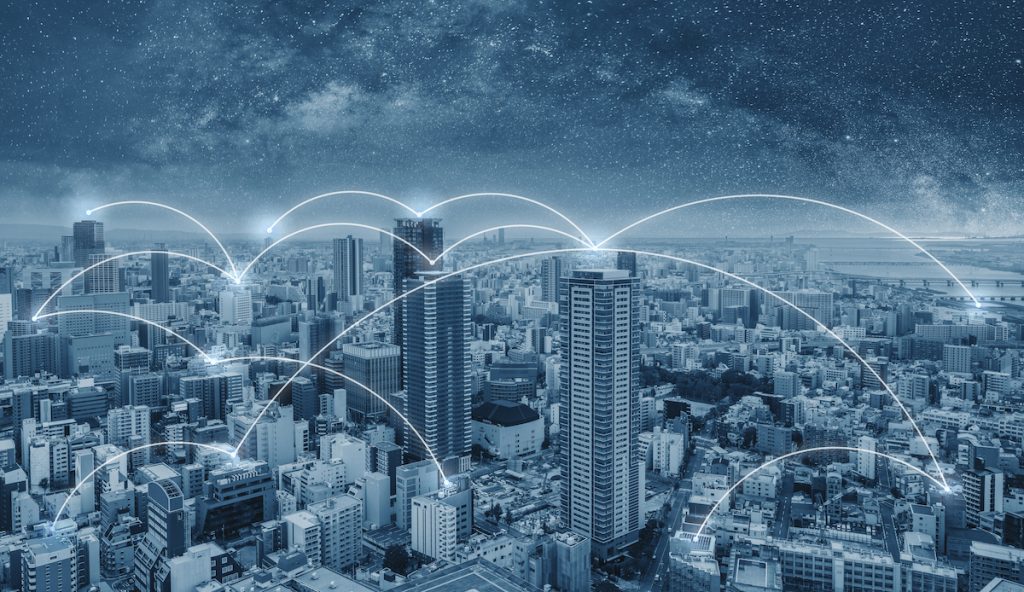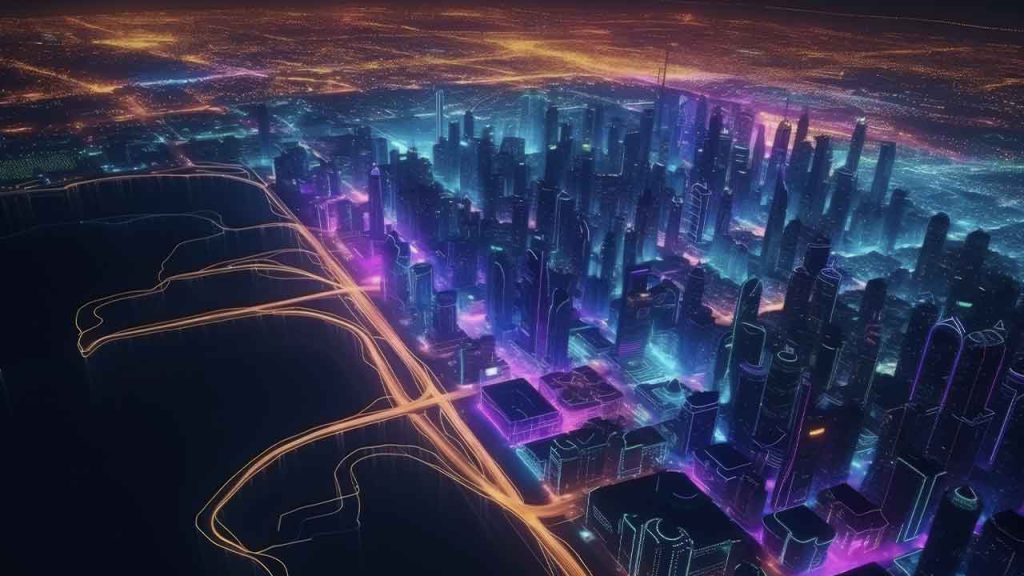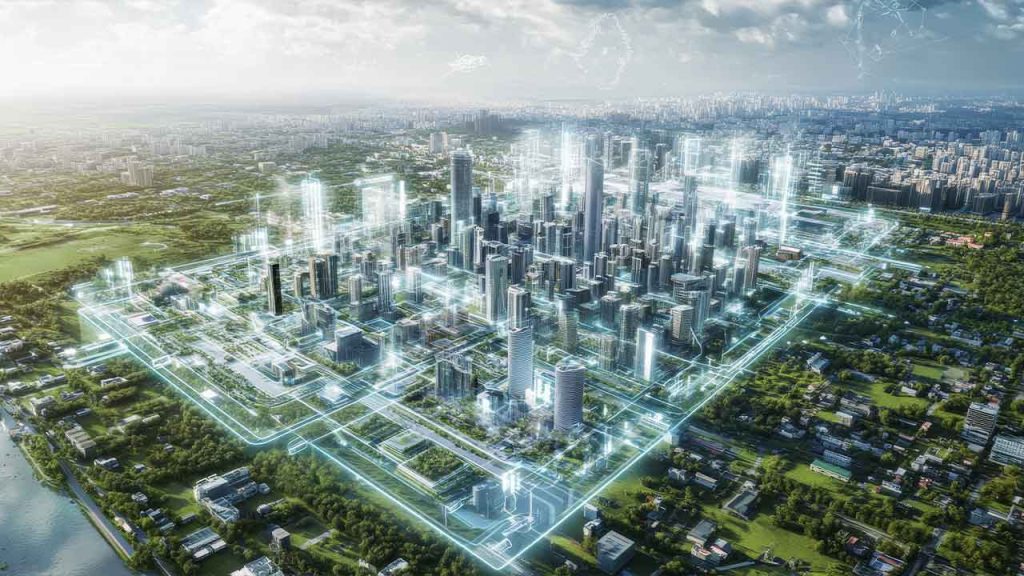Smart Cities – From Vertical Farming to Vertiports
Cities are bursting at their seams and to manage the urban sprawl the strategy has been simple – Go vertical! Tall buildings, elevated transportation, vertical farming, and now vertiports! All indications even at the recently concluded Uber Elevate Summit, point to one certainty– the platform disruption is getting ready for lift-off! Electric Vertical Take-off and Landing (eVTOL) and battery ecosystem are rapidly charging ahead. A complex interplay of forces ultimately impacts the quality of life in cities. In the journey toward Smart Cities, it is not just sufficient to “Go Vertical”. Complex inter-dependencies have to be modeled. Cities need to leverage a “Go Data” strategy as well.
The M.I.R.A.C.L.E. Framework
The M.I.R.A.C.L.E. Framework is a structured approach to understanding the force vectors that impact a Smart City. The first step is to develop a baseline and understand the city’s unique set of challenges. Once the baseline has been established, a virtuous cycle of plan-do-check-act enables the journey towards continuous improvement. The framework components include:
Mobility: An effective approach that promotes smart tolling to reduce congestion based on real-time data and promotes coordinated multi-modal public transportation, including idle capacity utilization (like Uber and other evolving autonomous mid-capacity vehicles).
Infrastructure: An integrated strategy that includes next generation infrastructure improvements including utilizing smart grid, green energy, as well as demand-side improvements like Green buildings, and response management systems. Infrastructure includes high-speed rail, highways, bridges and other multi-modal networks.
Resource Management: Quality of life is tied to environmental stewardship, including air quality, waste management, water recycling, and rainwater harvesting. The degree of general cleanliness, sustainability, and civic amenities are also critical.
Automotive /Alternative Support: Smart parking, electric charging stations, HOV lanes and automated people mover solutions are important approaches to eliminating bottlenecks. Support from local utilities for electric charging is pivotal to enabling change.
Connectivity: Penetration of “right” cost connectivity (utilizing appropriate technology mix) and supporting open-data platforms enable a range of automated, context-aware cognitive services that are also safe and secure.
Local Leadership & Incentives: All change is local and requires vision as well as the ability to execute. Local leadership is a key catalyst and promotes risk sharing, strategic partnerships and provides right incentive for change.
E-Governance: Governance approach based on transparency, ease of doing business and open feedback mechanism create a culture of service to citizens.
A smart city is in the eyes of the beholder, i.e. the empowered citizen. The “needle mover” is the perception of the change in the quality of life.
The BIG Idea
Each city reacts to stimulus in unique ways. The stimulus could include weather, sporting events, and even social media. Complex inter-dependencies can be modeled using the M.I.R.A.C.L.E. Framework. If a Smart City has to be adaptive– there must be a way to characterize cause and effect, model incentive and deterrents, as well as analyze action and reaction. Welcome to the Digital Avatar a.k.a. the Digital Twin!
The Digital Twins are advanced computational models of the physical world. High-fidelity Digital Twins are constantly learning how the Smart City behaves and would be the enablers of next-generation services.
For example, if the President was flying in and there were airspace restrictions, flight delays, and roadblocks due to a protest, a context-aware service that alerts only the intended/ affected citizen through a connected, cognitive platform and associated service provider would be possible through a Digital Twin. A Digital Twin can respond to myriad factors that impact a Smart City making it agile and responsive.
Attempts at the various version of the Digital Twin include the Los Angeles’s Bureau of Engineering’s Navigate LA, which overlays several layers of data on GIS maps. The Virtual Singapore Digital Twin can help the city understand how the sun’s shadow could interplay with existing or new buildings.
The key is to build a rich data reservoir. The better the data reservoir better would be the ability to build a high-fidelity Digital Avatar.
But who would pay for this colossal endeavor? The answer might well be in the data. Not only do we need a “Go Vertical” and “Go Data” approach, but we also need a “Go Data Monetization” strategy.
WALK the Talk
To realize the Smart City Vision, it is not only important to focus on improving the infrastructure but also rethinking the data monetization approach. How can non-traditional approaches be used to fund the massive overhaul needed to enable these transformations? If Digital Transformation is the new game in town, do cities need to upgrade the traditional city planning paradigm and rethink data monetization?
Do we need a breed of Chief Digital Officers who are empowered to leverage collaborative partnerships and co-innovations to drive data monetization approaches that will eventually cover the costs of the massive Smart City investments?
Will early pioneers be penalized? Or will bold approaches help redefine the collective future of Smart Cities? The answers to these questions will emerge from taking small steps.
The big dream starts with the first little steps. Here are some pointers:
- Invest in building a baseline (it will help create justification for the roadmap!)
- Enable critical data collection to help access the economic impact
- Focus on core problem areas and aim at small but frequent success (the Governor/Mayor needs bragging points!)
- It needs a village to build a Smart City – focus on the ecosystem!
The article was written by Sath Rao, Growth Leader Enabling Digital Transformation and originally was published here.



